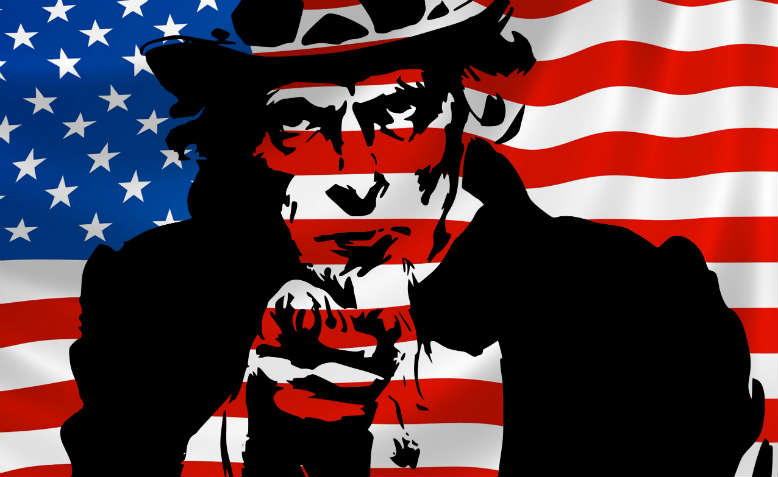Military interventions 1900–1933
US military forces were dispatched to Central America and the Caribbean more than 40 times between 1900 and 1933, in order to ensure pliant pro-US governments were in power or, as Theodore Roosevelt put it, ‘to show those Dagos that they will have to behave decently’. US marines occupied the Dominican Republic (1916-1924) and Haiti (1914-1934), taking over the countries’ custom houses so they could collect their debts.
Nicaragua suffered two prolonged occupations (1912-1925 and 1927-33), as the US tried to subdue nationalist uprisings. One Nicaraguan general, Augusto Sandino, led a guerrilla struggle against US forces. Sandino was undefeated when the marines left in 1933 but was assassinated a year later by the US-trained national guard. From the 1930s, direct US military intervention became less common and backing ‘friendly dictators’ became the preferred method of control.
Guatemala 1954
‘I want all of you to be damn good and sure you succeed,’ President Eisenhower told a meeting in the White House, three days before the overthrow of the elected president of Guatemala, Jacobo Arbenz, in June 1954. Arbenz, a moderate reformer, had angered the United Fruit Company by promulgating agrarian reform. The company, Guatemala’s largest landowner, had a tight web of personal connections with the Eisenhower administration. In August 1953, Eisenhower personally authorised the CIA to remove the Guatemalan president.
The CIA recruited and armed hundreds of Guatemalan exiles and foreign mercenaries, then transported them to the Guatemalan border, where they launched an ‘invasion’ in June 1954. CIA planes bombed Guatemala City and strategic sites, while the agency’s radio station broadcast misinformation. This unsettled the population and wore down the resolve of Guatemala’s military leaders, who, after nine days, persuaded Arbenz to resign.
Genocide in Guatemala
General Ríos Montt, who came to power in a coup in 1982, led a scorched-earth policy, burning hundreds of Mayan villages, atrocities which a UN commission defined as ‘acts of genocide’. US president Ronald Reagan declared that Montt had got a ‘bum rap on human rights’, and sent his regime economic aid and military helicopters. To circumvent a congressional ban on military aid (introduced by Reagan’s predecessor Jimmy Carter), Reagan also persuaded Israel to send military assistance.
The CIA continued operating in Guatemala throughout this period and CIA assets were responsible, according to an US intelligence oversight report, for ‘assassinations, extrajudicial execution, torture and kidnapping’. Reagan finally persuaded Congress to restore military aid in 1985, even though repression remained severe. The toll of death and suffering of the 34-year civil war (1962–96) makes sombre reading: 200,000 people, mainly indigenous Mayans, were killed, and one million people were forced to flee their homes.
The Contra war in Nicaragua, 1979–1990
President Reagan unleashed unbridled aggression against a tiny country with a population of just three million. The aim? To overthrow the left-wing Sandinista government, which had led a popular revolution against a dictator in 1979. US ‘low intensity warfare’, which involved the arming of thousands of ‘Contras’ (counter-revolutionaries), left 30,864 people dead and 20,064 wounded. The Contras targeted peasant collectives, schools and health clinics, to spread terror, disrupt the economy and undermine Sandinista social programmes.
The International Court of Justice estimated the cost of the war and US embargo at £11 billion. It ruled that the US had broken international law and violated Nicaragua’s sovereignty. The court ordered the US to stop ‘arming and training’ Contra rebels, a judgement the Reagan administration ignored. The Sandinistas introduced democracy to Nicaragua. They won elections in 1984, but after ten years of US‑backed war lost office in 1990. They were re-elected in 2007 (see pages 31–33).
Death squad terror in 1980s El Salvador
After the triumph of the Sandinistas, the Reagan administration was determined to stop another guerrilla-led revolution in Central America. It poured military aid, training and intelligence assistance into El Salvador, one of the most repressive states in the world, whose ‘murders, disappearances and violations of human rights’ were condemned by the UN general assembly.
The murder of Archbishop Óscar Romero in 1980 brought worldwide condemnation but the death squads’ leader Roberto D’Aubuisson was entertained in Washington by Reagan administration officials. By 1983, 11,000 people had been killed or ‘disappeared’ by the security forces and their allies. In total 75,000 were killed in the civil war (1980–1992) and one million fled their homes. A UN truth commission found that state forces and right-wing death squads were responsible for 85 per cent of the killings.
Turning against Noriega, 1989
Manuel Antonio Noriega, the military ruler of Panama from 1983 to 1989, had been a useful anti-communist ally to the US. Having trained at the School of the Americas, he was the CIA’s highest-ranking paid informant and, despite being heavily involved in drugs trafficking, was also an informant of the US Drugs Enforcement Agency. George Bush senior had lunched with him and Noriega had even visited the home of CIA director William Casey. But by the mid‑1980s, media exposés of his gun‑running and money laundering became an embarrassment.
The US also wanted to ensure that the Panama canal remained in pro-US hands and no longer needed his help in the Contra war in Nicaragua. Bush ordered 26,000 troops to attack in December 1989. Noriega was arrested and taken to the US where he was tried and jailed for drugs trafficking. Having served a seven-year sentence, he is now awaiting trial in Panama.











